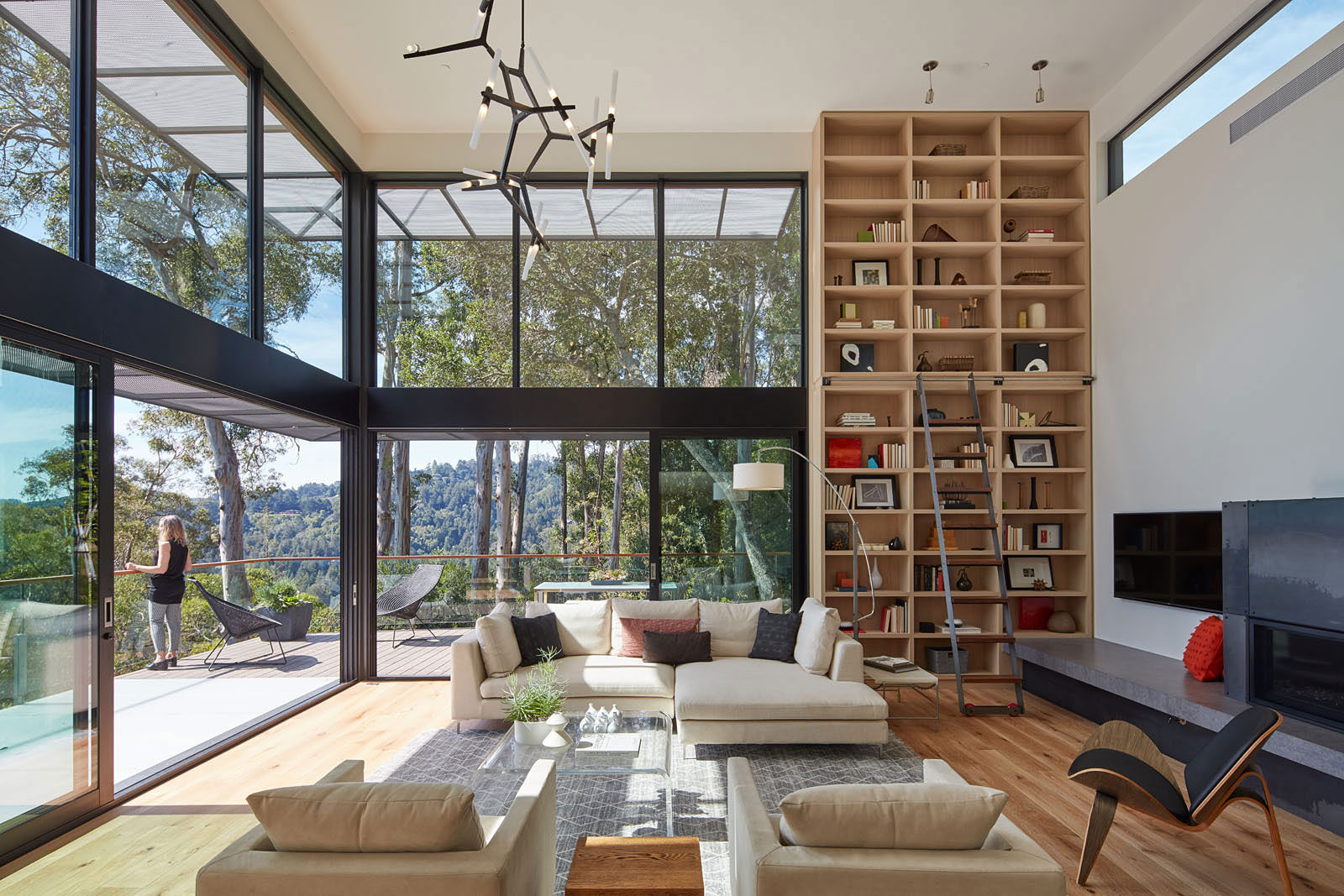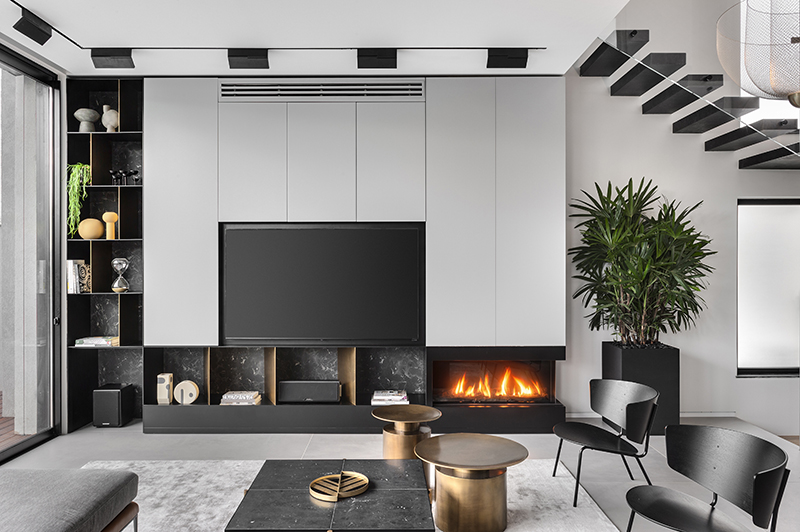Table Of Content

The Hungarian-born Marcel Breuer was greatly influenced by the De Stijl movement while studying at Bauhaus. His radical designs, focusing on the logical, mechanical, and least artistic form of furniture, ensured his rise to the master of the furniture workshop at only 23. Abstract art, a favorite in modern homes, was a drastic turn from traditional idealism of the 19th century. But other iconic modernist pieces, like Vincent van Gogh’s Starry Night, Henri Matisse’s fauvist Woman with a Hat or Pablo Picasso’s Boy with a Pipe, also suit a modern home.
Art Deco and Postmodernism
Upholstered furniture is often black, white, or other neutral tones, using the natural fibers of wool, cotton, linen, silk, and jute to add textural appeal. Neutrals, black, and white are the main colors in contemporary-style interiors. Black is often used for grounding and defining a contemporary-style room.
Pierce Natural II 6-Drawer Dresser
Inside 6 Homes That Prove Traditional Interior Design and Modern Style Really Do Go Together - Architectural Digest
Inside 6 Homes That Prove Traditional Interior Design and Modern Style Really Do Go Together.
Posted: Tue, 08 Nov 2022 08:00:00 GMT [source]
That’s why it’s not uncommon to see artwork or accent pieces in vivid contrasting colors. After the embellishment of the Victorian period, modernist chose the stillness of neutral walls instead. Greys, whites, and even soft pastels make the perfect backdrop for a modern design. But for the more adventurous, especially those who appreciate De Stijl, can opt for block primary colors – blue, red, and yellow.
Examples of contemporary interior design
Modern design is often used interchangeably with contemporary design, so if you often get them confused, you're not alone. To set the record straight, we're laying out all of the defining elements of modern design—and how exactly it's different from contemporary design so that the two aren't forever doomed to be conflated. However, contemporary-style spaces are not as bare as true minimalist interiors.
Despite the intentional lack of an open floor plan, the design choices make it feel cohesive. The traditional elements of this room—original hardwoods, an elaborate mantel, ornate crown molding—are paired with rich textiles, slim-line furniture, and color-coordinated styled shelves. Inspired by sandy beaches and blue waves, Coastal style incorporates bright colors, organic (often whitewashed) textures, and summery materials like wicker and rattan, as seen in this beach home by Jess Weeth. Ever since Nancy Lancaster took the reins at Colefax & Fowler, Americans have been obsessed with the English country house look. Since minimalism often means doing more with less, you'll often notice the importance of light and contrast in minimalist spaces, like this one by Robson Rak.

To soften and warm-up space, use heavily textured fabrics in plain colors for window treatments, pillows, or rugs. Air ducts may hang from a ceiling, broken bricks provide texture and stability, and exposed plumbing pipes are perfectly acceptable in a contemporary-style interior. To draw the eye, paint these structural details in bold contrasting colors or, to diminish their importance, blend them with the walls.
What are the defining elements of modern design?
Though furnishings call for a minimal approach, decorative accessories are where you can get creative when looking for a contemporary style home refresh. Stick with neutrals, stripes, and geometric prints in small amounts to bring in personality and to complement a well-designed contemporary living room with hints of unexpected, yet considerately placed play. But if you’re looking to go full-on with color, say an entire wall, we suggest keeping your trims, ceiling, and flooring light to compliment contemporary decorating style cues with flair. Contemporary decorating style is classic yet thoroughly of the moment and timeless thanks to a light-handed, spare take on decorating to ensure it will never feel dated. A curated collection of art, books, and decorative objects fills the built-in shelves in this space—a purposeful decision that makes the television less noticeable. Abstract art, slim seating, and a live-edge table bring texture and color.
And midcentury modern furniture and decor works best for someone who likes to hone a single design theme throughout each room, from the living room to kitchen and bedrooms. This is the part where you can let your personality shine through art in particular. Since your walls are normally all neutral colors, your art can be what brings in some color. We're hoping that if contemporary style interior design has caught your eye, contemporary art is also something that tickles your fancy and if so, you can pick your favorite pieces to put up.
Although contemporary design is diverse and includes many current trends, it has a few traits. On the one hand, these interiors ooze a sense of innovation and light-heartedness. If you compare modern vs contemporary interior design styles, you’re sure to spot similarities too. That’s because the current design works so well with modernism’s minimal and clean look. Both popular (particularly in recent years) and polarizing, minimalist design follows the core tenet of minimalism that says less is more.
Contemporary design refers to what is popular in the "here and now." Anything that is currently trending in the world of interior design can be considered contemporary. Modernism and minimalism are inspiring many of the biggest contemporary trends, with globalism being another major influence. Traditional design is classic and ornate, while contemporary design is clean and current, focusing on simplicity and function. The difference is in their aesthetics, with a tradition rooted in the past and contemporary reflecting the present. “What is Contemporary” design refers to styles of the present and future. In essence, it’s a reflection of what’s currently in style and trending.

You can tell a modern interior by its well-defined lines, precise color palette, and moderate use of décor. Without further ado, let’s jump right into the basics of modern vs contemporary interior design from our pros to help you accomplish your ideal design. Shapes add interest to a contemporary-style space, but there are certain rules you have to follow to stay in line with the design style.
It is not necessarily tied to a specific period in the same way that the modern style is. Instead, it is an ever-evolving style that reflects what is happening today. Modern art pairs with more minimalist furniture in this living room designed by Brad Ramsey. You can keep the look natural with wooden blinds in a dark hue, or go for sheer white floor to ceiling curtains that’ll add polished drama to a decidedly contemporary living room or dining room.
Though they are not overly ornate, items grow more esthetically pleasing. If you can see steel pillars, wooden beams, brick, or concrete of a building, it is certainly a contemporary one. Furniture designers and artists also use these materials to push the boundary between sculpture, art, and functional furniture. Exposed materials, especially in construction, are key to contemporary home interior design.
For a home on the water in Jamaica, Ishka Designs substituted more graphic contrast for organic elements like wood grain to complement the location without outshining the view. The result is a combination of organic modern and organic minimalism. Contemporary furniture design can meet any architectural style and look good. Its contrast of a rugged log cabin and pristine white lounge chairs make a stunning combo. As an expressionist architect, Erich Mendelsohn’s incorporated dynamic functionalism in his designs. His buildings are streamlined modern Art Deco creations, concerned with function above all else.
Simplicity, clean lines, plays on texture, and quiet drama are fundamental in achieving a perfectly balanced contemporary style home. With sleek silhouettes, neutral foundation pieces, and refined attention to editing, contemporary design can adapt to emerging trends by incorporating them into its ever-evolving approach. Spaces that bridge the gap between modern and traditional—like this kitchen by Toledo Geller—are dubbed transitional.
You're looking to create classic elegance through lampshades that are interesting but not pretentious. In terms of bulbs, go for a warm white (2,500K to 3,500K) as opposed to a cool white (5,000K) to achieve a warm, cozy interior. This applies specifically to living and dining rooms as you can go for cooler tones in kitchens and bathrooms, which are areas that need bright lighting. The principles of contemporary design emphasize functionality and minimalism. This approach places functionality at the forefront, ensuring that each design element serves a practical or aesthetic purpose. Minimalism, on the other hand, seeks to declutter and streamline spaces, focusing on the essentials that truly matter.

No comments:
Post a Comment